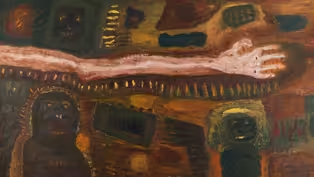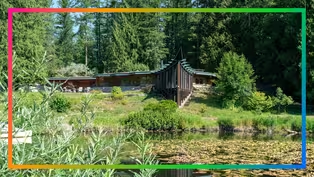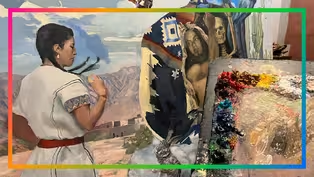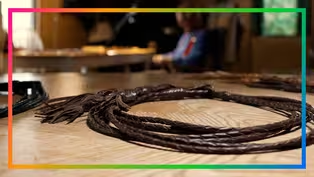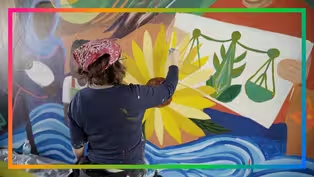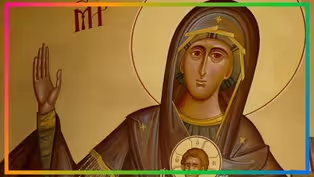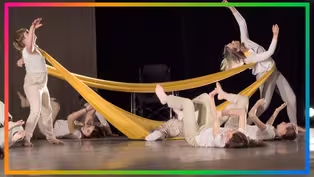
Please Touch the Art
Season 1 Episode 4 | 4m 51sVideo has Closed Captions
Step inside the immersive, touchscreen environment of the Stein Luminary.
Curate your own art experience by choosing from tens of thousands of high resolution images curated from art museums around the world. The immersive touchscreen digital environment of the Stein Luminary is like no other. Located on the campus of Boise State University, the space is also used for classes, events and exhibitions, and is open to the public at various times throughout the year.
Problems playing video? | Closed Captioning Feedback
Problems playing video? | Closed Captioning Feedback
createid is a local public television program presented by IdahoPTV
Friends of Idaho Public Television

Please Touch the Art
Season 1 Episode 4 | 4m 51sVideo has Closed Captions
Curate your own art experience by choosing from tens of thousands of high resolution images curated from art museums around the world. The immersive touchscreen digital environment of the Stein Luminary is like no other. Located on the campus of Boise State University, the space is also used for classes, events and exhibitions, and is open to the public at various times throughout the year.
Problems playing video? | Closed Captioning Feedback
How to Watch createid
createid is available to stream on pbs.org and the free PBS App, available on iPhone, Apple TV, Android TV, Android smartphones, Amazon Fire TV, Amazon Fire Tablet, Roku, Samsung Smart TV, and Vizio.
Buy Now
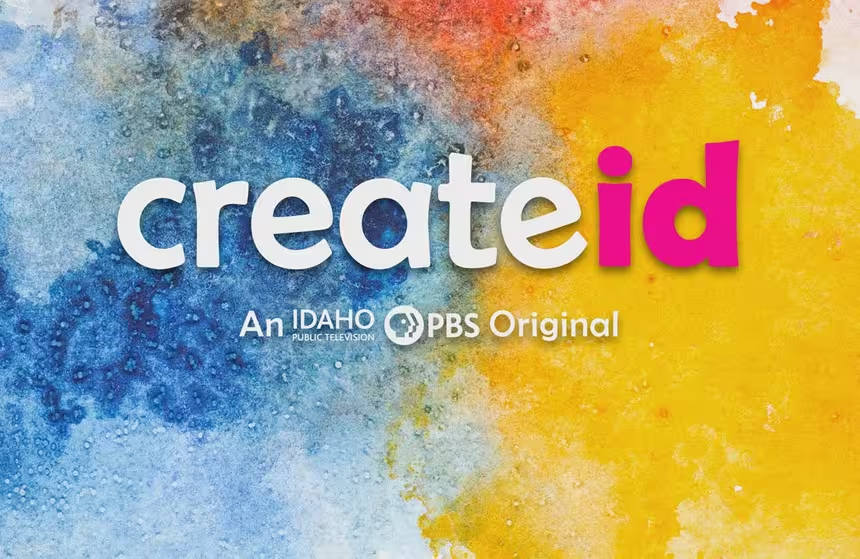
createid on YouTube
createid celebrates the unique talents of Idaho creators through lively video pieces. See exclusive content and join the community on Facebook, Instagram and YouTube. Subscribe now!Providing Support for PBS.org
Learn Moreabout PBS online sponsorshipMore from This Collection
createid
SARA: A Life in Dreams and Symbols
Video has Closed Captions
An illuminating look at the life and work of Idaho artist Sara Joyce. (30m 47s)
Video has Closed Captions
Unicorn Farm is a one-of-a-kind home in northern Idaho. (7m 50s)
Video has Closed Captions
Painter Lupe Galván melds his indigenous heritage with his love of European painting. (6m 56s)
Video has Closed Captions
Watch as Idaho leather braider Mike “Hooey” Storch crafts a traditional hat band. (5m 43s)
Video has Closed Captions
When the voices for hate get loud, the voices (and paint brushes) for love get louder. (6m 2s)
Video has Closed Captions
An ancient art form uplifts an historic Greek Orthodox Church in Pocatello, Idaho. (8m 1s)
Flipping the Script: Open Arms Dance Project
Video has Closed Captions
A profile of the Open Arms Dance Project, an inclusive, multi-generational dance company. (7m 48s)
Providing Support for PBS.org
Learn Moreabout PBS online sponsorshipLisa Hunt: We are really excited when we hear the ‘aha’ moment.
“Wow!” We are able to wrap an artwork around the entire space, and you can hear it in everyone's voices.
“That's really cool.” “So fun, what a cool exhibit.” My name is Lisa Hunt, and I am the interim director of the Keith and Catherine Stein Luminary on Boise State campus.
The Keith and Catherine Stein Luminary is an immersive and touch screen digital gallery.
It has 87 feet of wall that is made of glass.
Eight feet tall.
It amounts to about 42 million pixels.
When you're in the Luminary, you actually get to be the agent of your own experience.
You get to choose the artwork.
You get to put it up and expand it in whichever way that you want.
Steve Cutchin: The color in the space turned out to be far more stunning than I ever could imagine, and the images just leap off the screens.
They’re phenomenally beautiful.
It is just fantastic.
My name is Steve Cutchin, and I'm an associate professor of computer science at Boise State University.
Historically, the first system that was like this would have been the CAVE developed by the University of Illinois, Chicago.
CAVE stands for Computer Automatic Virtual Environment.
This specific combination is globally unique.
There isn't another one that uses the exact configuration that this one does.
Hunt: Well, the Stein Luminary comes equipped with an application that mines museum collections, and we're able to bring artwork in from all over the world.
A museum is only going to show maybe 5% of their collection on the floor at any given time.
So here we are able to mine numerous museums at the same time.
So we get to look at the other 95% of their collection, and bring them into one space.
We're starting to see more and more museums releasing their entire collections for use by the public.
So what a better way to take advantage of it than to put it on the wall, expanded as large as you can and really examine every detail.
There is nothing like it anywhere else that's both an immersive environment and touch screen.
For that reason, we are really innovating from this space.
Emma Kirks: This space and this building in general really lends itself to events.
It's such a creative and dynamic space to be in.
Hi, I'm Emma Kirks and I manage the events and community outreach for the Keith and Catherine Stein Luminary.
We focus on education, so we bring a lot of middle school, high school classes in here, Boise State classes.
We also have events that are open to the public that include poetry readings, lectures, video screenings and musical performances.
Cutchin: This is the user interface side; you explore the art.
My students have been putting together the backend part that connects what you see in here to all of the museums that offer up their content on the Internet.
Kirks: I think the really exciting innovation that's going on in this space really comes from our students.
Our students are the ones who are driving their educational learning.
They're the ones who are helping to code what you see behind me.
Cutchin: There's 42 million pixels in this space.
How do you drive it?
How do you display it?
How do you organize and optimize your content and your codes to support this type of environment?
And students in computer science get an opportunity to work with programs that take on those challenges.
“There we go, welcome to Egypt.” You have a lot of data to move around, a lot of data to manage and some big compute available to them to work with and learn.
“Now you can see some of the color still left...” Hunt: I've been teaching art history for about 20 years.
And if you know an art historian, they think they know everything.
I keep finding new things every day.
Support for PBS provided by:
createid is a local public television program presented by IdahoPTV
Friends of Idaho Public Television
